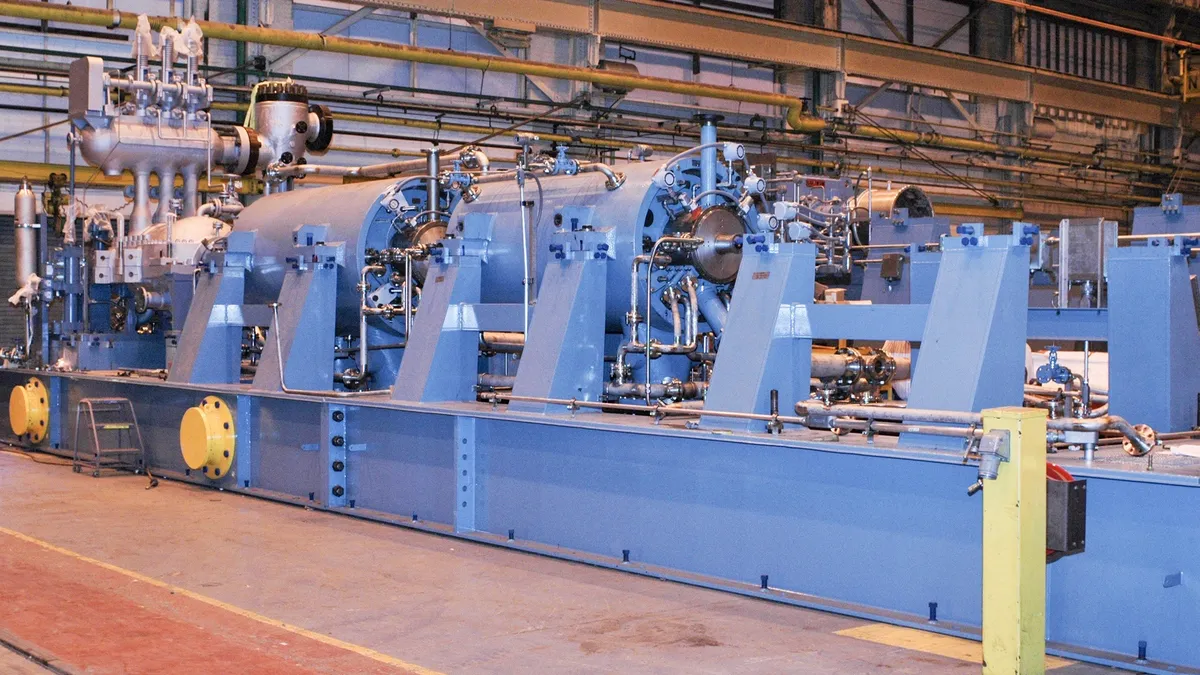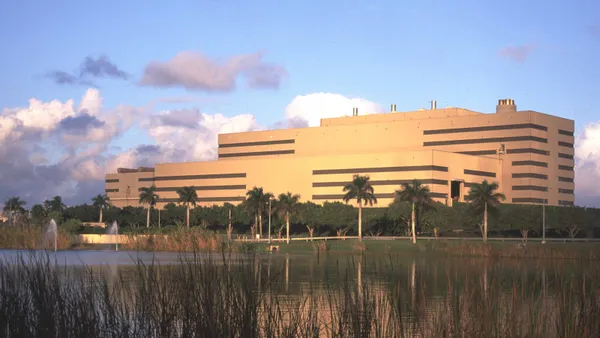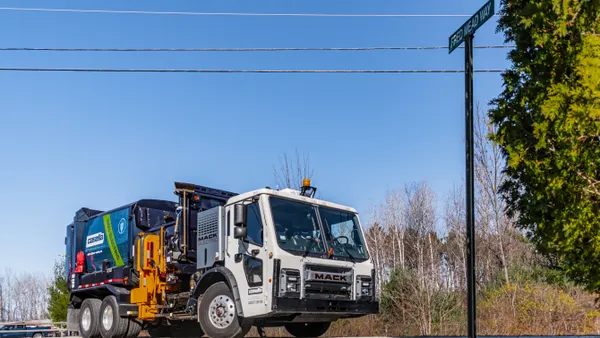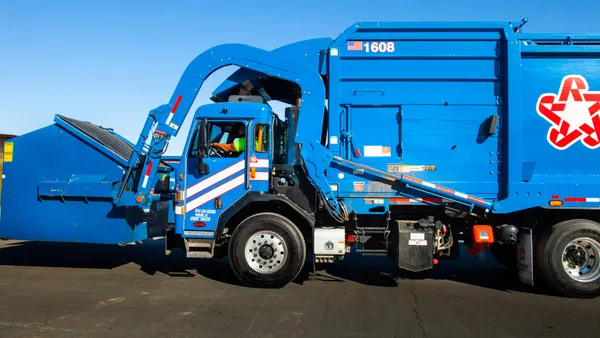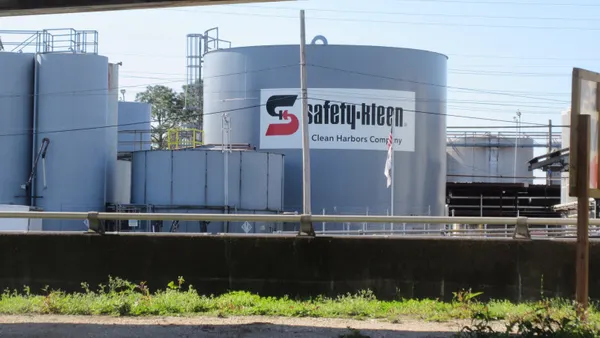Dive Brief:
- Fulcrum BioEnergy's waste-to-jet fuel plant in Nevada has shut down operations and laid off its workers effective May 17, Waste Dive confirmed.
- The company’s president and CEO since 2021, Eric Pryor, also appears to have departed. A request for comment sent to his Fulcrum email address prompted a response noting: “Eric is no longer with the company.”
- In a letter to employees, Fulcrum’s leadership said the company lacked funding to restart operations at the plant in Nevada after a shutdown. The closure comes after Fulcrum defaulted on bonds used to finance the Nevada project. The company has also struggled to get a second facility in Indiana off the ground.
Dive Insight:
Sustainable aviation fuel, or SAF, has been considered the future of more climate-friendly flight by many energy experts. The Biden Administration has made developing the lower-emissions fuel a priority, setting a target to reach annual SAF production capacity of 35 billion gallons by 2050. It estimates that would be enough to meet 100% of aviation fuel demand.
Fulcrum was early to the scene, launching in Pleasanton, California, in 2007. The company spent years raising money from an array of investors, including the federal government. But its first facility faced repeated delays. Fulcrum blew past projected opening dates for its flagship facility for much of the 2010s, Bloomberg reported in a story confirming the recent layoffs. The Nevada plant eventually started running in May 2022, the company announced, but it reportedly struggled to keep operations running consistently.
The Sierra Biofuels plant, as Fulcrum called it, had been touted by several major backers as a breakthrough in the production of SAF. Fulcrum said it was the first commercial-scale waste-to-SAF plant in the country, though the facility’s end product was synthetic crude turned into SAF at a Marathon Petroleum refinery. Fulcrum reported sending off its first shipment of syncrude in December 2022.
In August 2023, Fulcrum began missing payments on $289 million in bonds issued by Nevada Department of Business & Industry and entered forbearance soon after. The trustee, UMB Bank, initially set deadlines to work out an accelerated repayment program with Fulcrum in the fall, but recent filings suggest the bank and company are still negotiating a path forward.
The Indiana Finance Authority also issued a $375 million environmental improvement bond to Fulcrum in 2021 as the company pursued a project in Gary. That project has yet to begin construction and has long faced opposition, including from the local group Gary Advocates for Responsible Development.
Valerie Denney, a member of the group, said they had yet to hear whether Fulcrum had officially abandoned its plans in Indiana. Last fall, officials still insisted the facility was moving forward as planned.
“This is why we've been cautious from the beginning. It always seems like their claims have been out of sync,” Denney said.
Fulcrum leadership told staff at the Nevada facility on May 15 that it would shut down two days later, according to an email sent to employees and reviewed by Waste Dive. Executives said the funding needed to bring the facility back online after a shutdown was no longer available.
None of the several Fulcrum executives Waste Dive reached out to for comment responded. The automated response from Pryor’s email indicating he’s no longer with the company directed requests to Vicky Maday, whose LinkedIn profile says they have been Fulcrum’s manager of administration since 2021. Maday did not respond to a follow-up request for comment.
Fulcrum BioEnergy‘s website has also not functioned for at least a week.
Prior backers for Fulcrum’s Nevada facility include SK Innovation, a Korean energy investor, and Marubeni, a Japanese energy intermediary, both of which declined to comment. WM and Waste Connections also signed feedstock agreements with the facility. Fulcrum was at one time touted by energy company BP, an investor, as an example of the company's fuel diversification strategy. None of those companies responded to requests for comment.
While Fulcrum's plant floundered, the alternative fuels sector has continued to pursue other innovations. In January, LanzaJet opened a plant in Georgia that could produce SAF from ethanol. The ethanol would be made via a mix of agricultural waste, MSW, corn and other crops, the company announced. That plant is projected to produce 10 million gallons of SAF and renewable diesel per year at full capacity.
The federal government also continues to press forward on incentives for SAF production. On April 30, the Biden Administration announced new guidance clarifying a tax credit for the fuel’s production and an updated methodology for calculating the life cycle greenhouse gas emissions of an SAF product. SAF producers can earn a tax credit of $1.25 to $1.75 per gallon if their fuel has at least 50% fewer life cycle emissions than a petroleum fuel.



